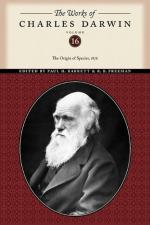Thus we see that when organic beings are placed under new and unnatural conditions, and when hybrids are produced by the unnatural crossing of two species, the reproductive system, independently of the general state of health, is affected by sterility in a very similar manner. In the one case, the conditions of life have been disturbed, though often in so slight a degree as to be inappreciable by us; in the other case, or that of hybrids, the external conditions have remained the same, but the organisation has been disturbed by two different structures and constitutions having been blended into one. For it is scarcely possible that two organisations should be compounded into one, without some disturbance occurring in the development, or periodical action, or mutual relation of the different parts and organs one to another, or to the conditions of life. When hybrids are able to breed inter se, they transmit to their offspring from generation to generation the same compounded organisation, and hence we need not be surprised that their sterility, though in some degree variable, rarely diminishes.
It must, however, be confessed that we cannot understand, excepting on vague hypotheses, several facts with respect to the sterility of hybrids; for instance, the unequal fertility of hybrids produced from reciprocal crosses; or the increased sterility in those hybrids which occasionally and exceptionally resemble closely either pure parent. Nor do I pretend that the foregoing remarks go to the root of the matter: no explanation is offered why an organism, when placed under unnatural conditions, is rendered sterile. All that I have attempted to show, is that in two cases, in some respects allied, sterility is the common result,—in the one case from the conditions of life having been disturbed, in the other case from the organisation having been disturbed by two organisations having been compounded into one.
It may seem fanciful, but I suspect that a similar parallelism extends to an allied yet very different class of facts. It is an old and almost universal belief, founded, I think, on a considerable body of evidence, that slight changes in the conditions of life are beneficial to all living things. We see this acted on by farmers and gardeners in their frequent exchanges of seed, tubers, etc., from one soil or climate to another, and back again. During the convalescence of animals, we plainly see that great benefit is derived from almost any change in the habits of life. Again, both with plants and animals, there is abundant evidence, that a cross between very distinct individuals of the same species, that is between members of different strains or sub-breeds, gives vigour and fertility to the offspring. I believe, indeed, from the facts alluded to in our fourth chapter, that a certain amount of crossing is indispensable even with hermaphrodites; and that close interbreeding continued during several generations between the nearest relations, especially if these be kept under the same conditions of life, always induces weakness and sterility in the progeny.




